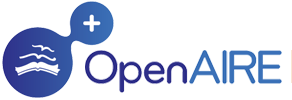РАЗРАБОТКА И АПРОБАЦИЯ МЕТОДА АДАПТИВНОЙ РАДИОХИРУРГИИ У ПАЦИЕНТОВ С МЕТАСТАТИЧЕСКИМ ПОРАЖЕНИЕМ ГОЛОВНОГО МОЗГА

Аннотация
Введение. Интракраниальные метастазы выявляются более чем у 20% пациентов с распространенным раком, резко ухудшают прогноз для жизни и являются одной из наиболее частых причин смерти. Стандартными методами лечения церебральных метастазов на протяжении многих десятилетий считается хирургическая резекция и облучение всего головного мозга. Все большее применение в лечении внутричерепных метастазов находит стереотаксическая радиохирургия (СРХ). Однако лечение крупных метастатических очагов путем однофракционной СРХ проблематично, так как подведение дозы, обеспечивающей достаточный уровень локального контроля, сопряжено с высоким риском развития тяжелых постлучевых осложнений.
Цель. Разработать режимы фракционирования при применении СРХ у неоперируемых пациентов с метастатическим поражением головного мозга и апробация метода адаптивной стереотаксической радиохирургии (АСРХ).
Материал и методы. В исследование были включены 39 пациентов с метастатическим поражением головного мозга, которым в 2018-2021 гг. проведена двухфракционная либо трехфракционная АСРХ по разработанной методике на гамма-терапевтическом комплексе «Gamma Knife Perfeхion» (Elekta, Швеция). Средний объем метастазов на момент первого сеанса составил 11,9 см3.
Результаты. Медиана общей выживаемости в общей когорте составила 13,0 месяцев, одногодичная выживаемость – 75,0%. При оценке локального контроля отсутствие прогрессирования через 6 месяцев после облучения констатировано у 33 из 39 пациентов (84,6%).
Выводы. Анализ данных литературы и собственный предварительный опыт демонстрирует актуальность разработки и внедрения в практику метода АСРХ при лечении неоперируемых пациентов с метастатическим поражением головного мозга.
Литература
Barnholtz-Sloan JS, Sloan AE, Davis FG, Vigneau FD, Lai P, Sawaya RE. Incidence proportions of brain metastases in patients diagnosed (1973 to 2001) in the Metropolitan Detroit Cancer Surveillance System. J Clin Oncol. 2004;22(14):2865-2872. https://doi.org/10.1200/JCO.2004.12.149
Ministerstvo zdravoohranenija Respubliki Belarus. Algoritmy diagnostiki i lechenija zlokachestvennyh novoobrazovanij. Кlinicheskij protocol. Minsk: Professional'nye izdanija; 2019. 616 p. (Russian).
Tendulkar RD, Liu SW, Barnett GH, Vogelbaum MA, Toms SA, Jin T, Suh JH. RPA classification has prognostic significance for surgically resected single brain metastasis. Int J Radiat Oncol Biol Phys. 2006;66(3):810-817. https://doi.org/10.1016/j.ijrobp.2006.06.003
Kondziolka D, Patel A, Lunsford LD, Kassam A, Flickinger JC. Stereotactic radiosurgery plus whole brain radiotherapy versus radiotherapy alone for patients with multiple brain metastases. Int J Radiat Oncol Biol Phys. 1999;45(2):427-34. https://doi.org/10.1001/jama.295.21.2483
Brown PD, Ballman KV, Cerhan JH, Anderson SK, Carrero XW, Whitton AC, Greenspoon J, Parney IF, Laack NNI, Ashman JB, Bahary JP, Hadjipanayis CG, Urbanic JJ, Barker FG 2nd, Farace E, Khuntia D, Giannini C, Buckner JC, Galanis E, Roberge D. Postoperative stereotactic radiosurgery compared with whole brain radiotherapy for resected metastatic brain disease (NCCTG N107C/ CEC$3): A multicentre, randomised, controlled, phase 3 trial. Lancet Oncol. 2017;18(8):1049-1060. https://doi.org/10.1016/S1470-2045(17)30441-2
Szeifert GT, Kemeny AA, Timperley WR, Forster DM. The potential role of myofibroblasts in the obliteration of arteriovenous malformations after radiosurgery. Neurosurgery. 1997;40(1):61-65. https://doi.org/10.1097/00006123-199701000-00013
Kondziolka D, Somaza S, Comey C, Lunsford LD, Claassen D, Pandalai S, Maitz A, Flickinger JC. Radiosurgery and fractionated radiation therapy: comparison of different techniques in an in vivo rat glioma mod- el. Journal of Neurosurgery. 1996;84(6):1033-1038. https://doi.org/10.3171/jns.1996.84.6.1033
Yamamoto M, Serizawa T, Shuto T, Akabane A, Higuchi Y, Kawagishi J, Yamanaka K, Sato Y, Jokura H, Yomo S, Nagano O, Kenai H, Moriki A, Suzuki S, Kida Y, Iwai Y, Hayashi M, Onishi H, Gondo M, Sato M, Akimitsu T, Kubo K, Kikuchi Y, Shibasaki T, Goto T, et al. Stereotactic radiosurgery for patients with multiple brain metastases (JLGK0901). Lancet Oncol. 2014;15(4):387-395. https://doi.org/10.1016/S1470-2045(14)70061-0
Golden DW, Lamborn KR, McDermott MW, Kunwar S, Wara WM, Nakamur JL, Sneed PK. Prognostic factors and grading systems for overall survival in patients treated with radiosurgery for brain metastases: variation by primary site. J Neurosurg. 2008;109:77-86. https://doi.org/10.3171/JNS/2008/109/12/S13
Chang EL, Wefel JS, Hess KR, Allen PK, Lang FF, Kornguth DG, Arbuckle RB, Swint JM, Shiu AS, Maor MH, Meyers CA. Neurocognition in patients with brain metastases treated with radiosurgery or radiosurgery plus whole-brain irradiation: A randomised controlled trial. Lancet Oncol. 2009;10(11):1037-1044. https://doi.org/10.1016/S1470-2045(09)70263-3
Brown PD, Jaeckle K, Ballman KV, Farace E, Cerhan JH, Anderson SK, Carrero XW, Barker FG 2nd, Deming R, Burri SH, Ménard C, Chung C, Stieber VW, Pollock BE, Galanis E, Buckner JC, Asher AL. Effect of Radiosurgery Alone vs Radiosurgery With Whole Brain Radiation Therapy on Cognitive Function in Patients With 1 to 3 Brain Metastases: A Randomized Clinical Trial. JAMA. 2016;316(4):401-409. https://doi.org/10.1001/jama.2016.9839
Shaw E, Scott C, Souhami L, Dinapoli R, Kline R, Loeffler J, Farnan N. Single dose radiosurgical treatment of recurrent previously irradiated primary brain tumors and brain metastases: final report of RTOG protocol 90-05. Int J Radiat Oncol Biol Phys. 2000;47(2):291-298. https://doi.org/10.1016/S0360-3016(99)00507-6
Vogelbaum MA, Angelov L, Lee SY, Li L, Barnett GH, Suh JH. Lee Local control of brain metastases by stereo-tactic radiosurgery in relation to dose to the tumor margin. J Neurosurg. 2006;104(6):907-912. https://doi.org/10.3171/jns.2006.104.6.907
Korytko T, Radivoyevitch T, Colussi V, Wessels BW, Pillai K, Maciunas RJ and Einstein DB: 12 Gy gamma knife radiosurgical volume is a predictor for radiation necrosis in non-AVM intracranial tumors. Int J Radiat Oncol Biol Phys. 2006;64(2):419-424. https://doi.org/10.1016/j.ijrobp.2005.07.980
Minniti G, Clarke E, Lanzetta G, Osti MF, Trasimeni G, Bozzao A, Romano A, Enrici RM. Stereotactic radiosur- gery for brain metastases: analysis of outcome and risk of brain radionecrosis. Radiat Oncol. 2011;6:48. https://doi.org/10.1186/1748-717X-6-48
Narayana A, Chang J, Yenice K, Chan K, Lymberis S, Brennan C, Gutin PH. Hypofractionated stereotactic ra- diotherapy using intensity-modulated radiotherapy in pa- tients with one or two brain metastases. Stereotact Funct Neurosurg. 2007;85(2-3):82-87. https://doi.org/10.1159/000097923
Wiggenraad R, Verbeek-de Kanter A, Mast M, Molenaar R, Kal HB, Lycklama à Nijeholt G, Vecht C, Struikmans H. Local progression and pseudo progression after sin- gle fraction or fractionated stereotactic radiotherapy for large brain metastases. A single centre study. Strahlenther Onkol. 2012;188(8):696-701. https://doi.org/10.1007/s00066-012-0122-3
Navarria P, Pessina F, Cozzi L, Ascolese AM, De Rose F, Fogliata A, Franzese C, Franceschini D, Tozzi A, D'Agostino G, Comito T, Iftode C, Maggi G, Reggiori G, Bello L, Scorsetti M. Hypo-fractionated stereotactic radiotherapy alone using volumetric modulated arc therapy for patients with single, large brain metastases unsuitable for surgical resection. Radiat Oncol. 2016;11:76. https://doi.org/10.1186/s13014-016-0653-3
Minniti G, D'Angelillo RM, Scaringi C, Trodella LE, Clarke E, Matteucci P, Osti MF, Ramella S, Enrici RM, Trodella
L. Fractionated stereotactic radiosurgery for patients with brain metastases. J Neurooncol. 2014;117(2):295-301. https://doi.org/10.1007/s11060-014-1388-3
Minniti G, Scaringi C, Paolini S, Lanzetta G, Romano A, Cicone F, Osti M, Enrici RM, Esposito V. Single-fraction versus multifraction (3×9 Gy) stereotactic radiosurgery for large (>2 cm) brain metastases: a comparative analysis of local control and risk of radiation-induced brain necrosis. Int J Radiat Oncol Biol Phys. 2016;95(4):1142-1148. https://doi.org/10.1016/j.ijrobp.2016.03.013
Higuchi Y, Serizawa T, Nagano O, Matsuda S, Ono J, Sato M, Iwadate Y, Saeki N. Three-Staged Stereotactic Radiotherapy without Whole Brain Irradiation for Large Metastatic Brain Tumors. Int J Radiat Oncol Biol Phys. 2009;74(5):1543-1548. https://doi.org/10.1016/j.ijrobp.2008.10.035
Yomo S, Hayashi M, Nicholson C. A prospective pilot study of two-session Gamma Knife surgery for large met- astatic brain tumors. J Neurooncol. 2012;109(1):159-165. https://doi.org/10.1007/s11060-012-0882-8
Angelov L, Mohammadi AM, Bennett EE, Abbassy M, Elson P, Chao ST, Montgomery JS, Habboub G, Vogelbaum MA, Suh JH, Murphy ES, Ahluwalia MS, Nagel SJ, Barnett GH. Impact of 2-staged stereotactic radiosurgery for treatment of brain metastases ≥2 cm. J Neurosurg. 2018;129(2):366-382. https://doi.org/10.3171/2017.3.JNS162532
Yamamoto M, Higuchi Y, Serizawa T, Kawabe T, Nagano O, Sato Y, Koiso T, Watanabe S, Aiyama H, Kasuya H. Three-stage Gamma Knife treatment for met- astatic brain tumors larger 10 cm3: а 2-institute study including re-analyses of earlier results using compet-ng risk analysis. J Neurosurg. 2018;129(1):77-85. https://doi.org/10.3171/2018.7.GKS181392
Osinov IK, Golanov AV, Banov SM, Artemenkova AE, Kostjuchenko VV, Dalechina AV. Stazhirovannaja radio- hirurgija v lechenii pacientov s metastaticheskim porazhe- niem golovnogo mozga [Staged radiosurgery in the man- agement of patients with brain metastases]. Nejrohirurgija [Russian Journal of Neurosurgery]. 2021;23(1):26-37. https://doi.org/10.17650/1683-3295-2021-23-1-26-37 (Russian).
Ito D, Aoyagi K, Nagano O, Serizawa T, Iwadate Y, Higuchi Y. Comparison of two-staged Gamma Knife radio- surgery outcomes for large brain metastases among primary cancers. Journal of Neuro-Oncology. 2020;147(1):237- 246. https://doi.org/10.1007/s11060-020-03421-y
Serizawa T, Higuchi Y, Yamamoto M, Matsunaga S, Nagano O, Sato Y, Aoyagi K, Yomo S, Koiso T, Hasegawa T, Nakazaki K, Moriki A, Kondoh T, Nagatomo Y, Okamoto H, Kohda Y, Kawai H, Shidoh S, Shibazaki T, Onoue S, Kenai H, Inoue A, Mori H. Comparison of treatment results between 3- and 2-stage Gamma Knife radiosurgery for large brain metastases: a retrospective multi-institutional study. J Neurosurg. 2019;131(1):227- 237. https://doi.org/10.3171/2018.4.JNS172596
Brenner DJ. The linear-quadratic model is an appropriate methodology for determining isoeffective doses at large doses per fraction. Seminars in radiation oncology. 2008;18(4):234-239. https://doi.org/10.1016/j.semradonc.2008.04.004
Fowler JF. The Linear-quadratic formula and progress in fractionated radiotherapy. BJR. 1989;6(740):679-694. https://doi.org/10.1259/0007-1285-62-740-679
Eisenhauer EA, Therasse P, Bogaerts J, Schwartz LH, Sargent D, Ford R, Dancey J, Arbuck S, Gwyther S, Mooney M, Rubinstein L, Shankar L, Dodd L, Kaplan R, Lacombe D, Verweij J. New response evaluation criteria in solid tumours: revised RECIST guideline (version 1.1). Eur J Cancer. 2009;45(2):228-247. https://doi.org/10.1016/j.ejca.2008.10.026






























